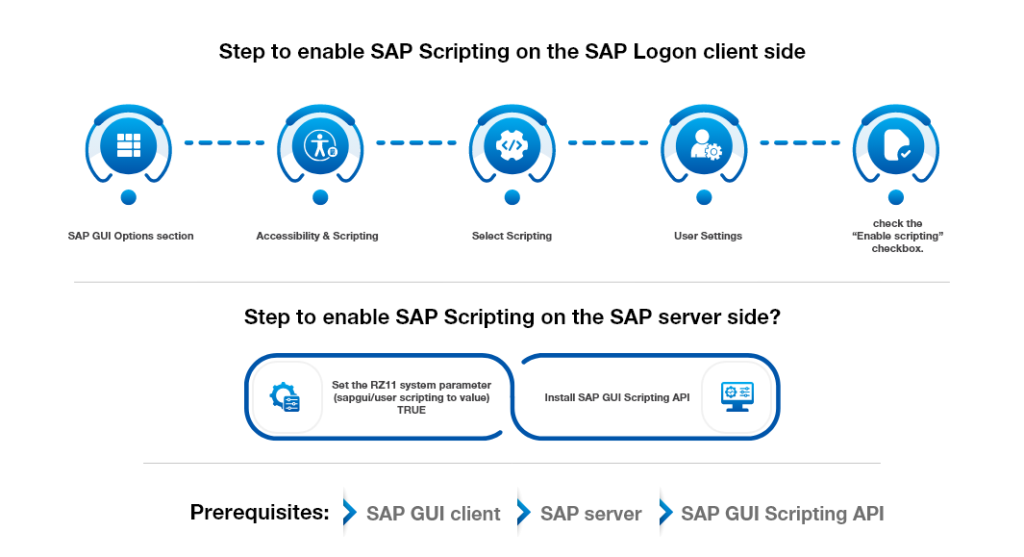
Posted On Jan 01 2024 | 10:48
Part 3 builds on our foundational understanding of SAP User and Role Management (Part 1) and the advantages of SAP GUI Scripting Automation (Part 2). This section offers a concise guide for implementing automation, outlining steps and prerequisites. Best practices are shared to enhance effectiveness, accompanied by real-world examples.
Implementation Steps and Prerequisites:

- Enable SAP Scripting: It is necessary to enable scripting for both SAP GUI client and SAP server. The behavior can be adjusted for each machine in the Windows Registry. To do this, go to SAP GUI Options, select Accessibility & Scripting, and check the “Enable scripting” box in the User Settings section.
- Server-side Setup: The BASIS team must set the RZ11 system parameter SAP GUI /user scripting to TRUE.
- Install SAP GUI Scripting API: The SAP GUI Scripting API is needed to write scripts that automate SAP GUI client operations.
Prerequisites include the SAP GUI client, SAP server, and SAP GUI Scripting API.
Best Practices for Successful Automation:
Organizations looking to use SAP GUI scripting automation in user and role management should adhere to some best practices to ensure a successful implementation.
- Enable server scripting, which can be done by following the steps outlined in the SAP Help Portal.
- Make use of the SAP GUI Scripting API, a COM library that simplifies automation. Also, recording and playback of user interactions can be done with SAP GUI Scripting, to help save time.
- Robotic Process Automation (RPA) platforms also use SAP GUI Scripting for automating SAP GUI for Windows.
- SAP Business Roles can be used to simplify deploying SAP User Experience (UX) for SAP S/4HANA, by scoping relevant apps and UIs based on current GUI transaction usage.
Examples of Effective Automation Scenarios:
There are multiple ways that SAP GUI scripting automation can be helpful for user and role management. For example, it can be used to quickly and accurately create mass users, assign roles, reset passwords, delete users, and delete roles. This can be done by creating a script that reads data from an Excel file and performs the desired action with the click of a button.
Resources and Tools for Automation of SAP GUI Scripting:
If companies wish to start with user and role administration automation of SAP GUI scripting, then here are some resources and tools that can be of help:
- VBScript: SAP GUI scripting uses Microsoft’s VBScript language which is simple to learn and can undertake basic duties. This language has been a part of Windows since Windows 98, so it has plenty of documentation.
- SAP GUI Scripting API:To be able to access the SAP GUI and modify data, an API provided by SAP is necessary to be used with VBScripts.
- Robotic Process Automation (RPA): RPA platforms use SAP GUI Scripting to automate SAP GUI for Windows. RPA imitates user interaction and can be used as a basic macro recorder or a powerful tool to create intricate automation workflows.
In summary, at The People Tech Group, we stand ready to elevate your business through seamless SAP GUI Scripting Automation. Specializing in Application Management Services (AMS), we ensure a smooth integration process, providing robust maintenance and support. For a simplified path to increased efficiency, contact us at ERP – People Tech Group.
